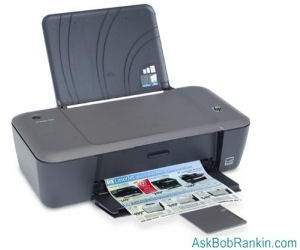
By Bob Rankin
Buying an Inkjet Printer
Inkjet printers are the workhorses of home and office. There are hundreds of different models available, each offering dozens of features. Buying an inkjet printer can be confusing unless you know which options are really important. The good news is, inkjet printers are dirt cheap. The bad news: buying the wrong inkjet printer (even a cheap one) can be very expensive. Here’s what you need to know…
Inkjet Printers: What to Know Before You Shop
What’s important when you’re buying an inkjet printer? The price tag is the first thing many shoppers look for. But don’t stop there. Typically, the bargain printers have much higher printing costs to offset the low initial cost. In fact, some inkjets are sold as loss-leader items, because the manufacturers know that sales of ink cartridges is where they make the real money.
Pay attention to the estimated cost per page figures when shopping for a printer. And do a little research to see if your printer is a good candidate for compatible off-brand cartridges or remanufactured inkjet printer cartridges. My article Should You Buy Discount Ink Cartridges? goes into detail on this issue, and the reader comments contain some valuable real-world insights.
Other factors to consider are speed (pages per minute) for both black and color printing, paper tray capacity, and connectivity. Does the printer come with a USB cable? Can it operate wirelessly?
Home users who want to print photos should see if the inkjet can handle photo paper, and carefully check the specs on both cost and speed. Business users may need duplexing, the ability to print on envelopes and legal-size paper, or the faxing and scanning features found on all-in-one inkjet printers.
Print speed may not matter too much in light-duty home printing applications, but in a business setting time is money. You have to take manufacturers’ ratings with a grain of salt; some advertised print speeds may refer only to draft-quality black-only prints. Look for the “ISO ppm” speed, which is the international standard for measuring print speed. Be sure to dig into print speeds of printing applications that truly matter to you.
This excerpt is shared with permission from Bob Rankin.




